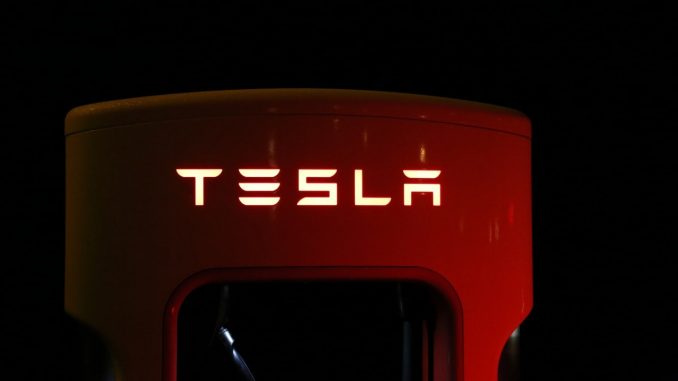
Do you know the traveling speed of electricity? It’s about 186,000 miles per second! For this reason, it has to be used almost at the same it is generated unless you can store it somewhere. It seems that only batteries can solve this challenge of matching production and the demand for supply. And, you will need big-size batteries for storing electricity produced at power grids and plants. Fortunately, we are not far away from a solution! New electricity innovation can extend the shelf life of electrical power and change the way we get electricity.
Many electronics run on batteries these days. There are even electric cars too. But, only big batteries can facilitate easier and widespread supply of electricity from the power grids.
What is the Current System for Power Storage?
The majority of grid systems use pumped storage hydroelectricity (PSH) for storing electricity. It stocks excess electricity for periods of higher demand. You can use it with any type of power plants using either renewable sources (such as wind and solar) or traditional resources (such as coal or nuclear).
It stores energy by using water’s gravitational power. The pumps lift the water from a low-height place to a reservoir in a higher elevation by using off-peak electric power. During the peak-time of demand, the water is released through turbines to spin them at full force and produce electricity.
The problem is the system’s reservoirs are quite smaller when stacked against hydroelectric dams of similar capacity. Nevertheless, the PSH is currently the largest form of grid energy storage. As of 2017, PSH is used in more than 96% of all storage installations throughout the world, according to the report of the DOE Global Energy Storage Database. The total capacity crosses 168 GW with an impressive rate of energy-efficiency, which is between 70% and 80%.
Problems with the PSH System
The PSH system is the most viable option these days, however, it has some disadvantages, which make researchers lean toward battery-system storage. The downsides that halt the procedure include:
- Finding a suitable site for building the system is difficult. It needs both water availability and geographical height, so the facility has to be in a mountainous or hilly area.
- The design and installation of the plants need careful planning. It’s necessary to handle many social and ecological issues for the setup of such a facility in the highland.
- After using once, the water needs to be pumped again to use it again.
- The system is expensive to build. The costs increase even more because of the odd location and dual conversion of energy.
New Electricity Innovation: The Battery Storage System
Several companies have already made progress with their goal of creating huge battery storage systems. The Tesla Energy is not only the electric carmaker but also a big player in the grid-storage world. Its home storage solution Powerwall is a big success and receives much media attention.
The General Electric (GE) is also ramping up the efforts by successfully developing a battery storage for gas generators. Soon, there will be systems for other types of generators, too. It could change the way how we currently use the power plants for real-time energy supply services. The new electricity innovation of huge battery storage is likely to be a game-changer in the future.
The Advantages of the Battery Storage System
It can solve most of the PSH-related problems because it can potentially supply electricity by demand, reduce power cuts around the country and handle the higher demands during the peak hours. It can also reserve excess wind and solar power to distribute the power at a later period.
Maximize the consumption of generated power
The conventional storage cannot use all the power that a plant generates. Installing batteries will allow the consumption of all this excess power. You can even fix the times for using the stored electricity.
Flexibility of use
Batteries give you the flexibility to offset peak electricity use. You can charge the batteries when electricity is least expensive and discharge when it’s most expensive. Besides, it lets you use the power when the resource is unavailable. For example, you will get reserved electricity even when there is no sun or wind.
Access to electricity without a grid connection
Not all the regions in the United States have access to power grids. In that case, a battery storage system in a solar or wind plant will be the best solution for supplying electricity. The same is true for many rural and remote areas in many countries.
Cutting expenses to some extent
If grid connection does not cover the area you live in, you can extend it by paying for the cable, labor, and other setup costs. You also have to bear the expenses should any natural disaster damages the connection. The solar panels and battery storage can eliminate these expenses.
Reducing carbon footprint
Many people love to live off the grid. The alternative power sources such as diesel generators are expensive and discharge too many harmful elements in the air. The pairing of solar with batteries is less expensive and leaves less carbon footprint.
The Final Thought: Problems and Possibilities
The battery storage system has many positive sides, but it still has some problems that restrict its widespread commercialization. Batteries are too costly when compared with cheap resources such as natural gas and coal. The good news is the prices are likely to tumble in the coming days. In fact, the prices have dropped by half just since 2014. The new electricity innovation of storing energy will facilitate the widespread transformation of power grids and faster spreading of cheap solar and wind power. The battery revolution will soon become impossible to ignore.

